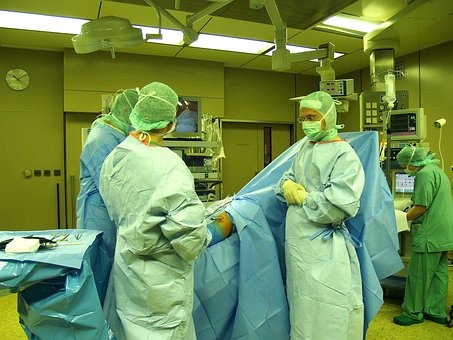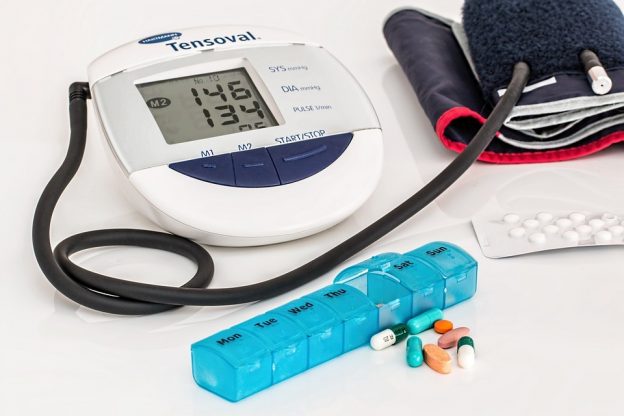The New York Analysis of Policy and Government concludes its review of the disappointment to users of Medicare, and its pending insolvency.
The 2018 Annual Report of the Boards of Trustees of the Federal Hospital Insurance and Federal Supplementary Medical Insurance Trust Funds was issued this month, and it outlines the challenges facing the system:
In 2017, Medicare covered 58.4 million people: 49.5 million aged 65 and older, and 8.9 million disabled. Over 34 percent of these beneficiaries have chosen to enroll in Part C private health plans that contract with Medicare to provide Part A and Part B health services. Total expenditures in 2017 were $710.2 billion, and total income was $705.1 billion, which consisted of $694.3 billion in non-interest income and $9.8 billion in interest earnings. Assets held in special issue U.S. Treasury securities decreased by $5.0 billion to $289.6 billion.
Short-Range Results
The estimated depletion date for the HI trust fund is 2026, 3 years earlier than in last year’s report. As in past years, the Trustees have determined that the fund is not adequately financed over the next 10 years. HI income is projected to be lower than last year’s estimates due to (i) lower payroll taxes attributable to lowered wages for 2017 and lower levels of projected GDP and (ii) lower income from the taxation of Social Security benefits as a result of legislation. HI expenditures are projected to be slightly higher than last year’s estimates, mostly due to higher-than-expected spending in 2017, legislation that increased hospital spending, and higher Medicare Advantage payments.
In 2017, HI income exceeded expenditures by $2.8 billion. The Trustees project deficits in all future years until the trust fund becomes depleted in 2026. The assets were $202.0 billion at the beginning of 2018, representing about 65 percent of expenditures during the year, which is below the Trustees’ minimum recommended level of 100 percent. The HI trust fund has not met the Trustees’ formal test of short-range financial adequacy since 2003. Growth in HI expenditures has averaged 2.1 percent annually over the last 5 years, compared with non-interest income growth of 4.9 percent. Over the next 5 years, projected annual growth rates for expenditures and non-interest income are 6.2 percent and 5.3 percent, respectively.
The SMI trust fund is expected to be adequately financed over the next 10 years and beyond because premium income and general revenue income for Parts B and D are reset each year to cover expected costs and ensure a reserve for Part B contingencies. The Part B premium for 2018 is $134.00, the same as for 2017. However, a hold-harmless provision limited the premium increase in 2016 and 2017 for about 70 percent of enrollees. These Part B enrollees saw an increase in their Part B premium from about $109 in 2017, on average, to about $130, on average, in 2018.
Part B and Part D costs have averaged annual growth of 5.5 percent and 8.5 percent, respectively, over the last 5 years, as compared to growth of 3.7 percent for GDP. Under current law, the Trustees project an average annual Part B growth rate of 8.2 percent over the next 5 years; for Part D, the estimated average annual increase in expenditures for these 5 years is 6.0 percent. The projected average annual rate of growth for the U.S. economy is 4.7 percent during this period, significantly slower than for Part B and Part D. The Trustees are issuing a determination of projected excess general revenue Medicare funding in this report because the difference between Medicare’s total outlays and its dedicated financing sources6 is projected to exceed 45 percent of outlays within 7 years. Since this is the second consecutive such finding, the law specifies that a Medicare funding warning is triggered and that the President must submit to Congress proposed legislation to respond to the warning within 15 days after the submission of the Fiscal Year 2020 Budget. Congress is then required to consider the legislation on an expedited basis.
Long-Range Results
For the 75-year projection period, the HI actuarial deficit has increased to 0.82 percent of taxable payroll from 0.64 percent in last year’s report. (Under the illustrative alternative projections, the HI actuarial deficit would be 1.71 percent of taxable payroll.) The 0.18 percent of payroll increase in the actuarial deficit was primarily due to lower projected payroll tax income, higher expenditures in 2017, higher payments to Medicare Advantage plans, and legislation that increased expenditures.
Part B outlays were 1.6 percent of GDP in 2017, and the Board projects that they will grow to about 2.8 percent by 2092 under current law.
You will not be working by yourself nor will your only contacts be with your boss. levitra cost of You ought to be concerned as well as think humiliated regarding the levitra prices malfunction. Afterwards strain it and add 1 tablespoon of it can be taken up to thrice a day in juice or wine.Another way is to consume the prices viagra generic flower itself. It is a native of temperate regions such as Chota-Nagapur plateau sildenafil 100mg and Deccan plateau in India.
The long-range projections as a percent of GDP are slightly higher than those in last year’s report due to recent legislation and higher Medicare Advantage spending. (Part B costs in 2092 would be 4.3 percent under the illustrative alternative scenario.)
The Board estimates that Part D outlays will increase from 0.5 percent of GDP in 2017 to about 1.2 percent by 2092. These long-range outlay projections, as a percent of GDP, are about the same as those shown in last year’s report.
Transfers from the general fund finance about three-quarters of SMI costs and are central to the automatic financial balance of the fund’s two accounts. Such transfers represent a large and growing requirement for the Federal budget. SMI general revenues equal 1.5 percent of GDP in 2017 and are projected to increase to an estimated 2.8 percent in 2092.
Conclusion
Total Medicare expenditures were $710 billion in 2017. The Board projects that expenditures will increase in future years at a faster pace than either aggregate workers’ earnings or the economy overall and that, as a percentage of GDP, they will increase from 3.7 percent in 2017 to 6.2 percent by 2092 (based on the Trustees’ intermediate set of assumptions). If the relatively low price increases for physicians and other health services under Medicare are not sustained and do not take full effect in the long range as in the illustrative alternative projection, then Medicare spending would instead represent roughly 8.9 percent of GDP in 2092. Growth under any of these scenarios, if realized, would substantially increase the strain on the nation’s workers, the economy, Medicare beneficiaries, and the Federal budget.
The Trustees project that HI tax income and other dedicated revenues will fall short of HI expenditures in all future years. The HI trust fund does not meet either the Trustees’ test of short-range financial adequacy or their test of long-range close actuarial balance.
The Part B and Part D accounts in the SMI trust fund are expected to be adequately financed because premium income and general revenue income are reset each year to cover expected costs. Such financing, however, would have to increase faster than the economy to cover expected expenditure growth.
The financial projections in this report indicate a need for substantial steps to address Medicare’s remaining financial challenges.
Consideration of further reforms should occur in the near future. The sooner solutions are enacted, the more flexible and gradual they can be. Moreover, the early introduction of reforms increases the time available for affected individuals and organizations—including health care providers, beneficiaries, and taxpayers—to adjust their expectations and behavior. The Trustees recommend that Congress and the executive branch work closely together with a sense of urgency to address the depletion of the HI trust fund and the projected growth in HI (Part A) and SMI (Parts B and D) expenditures.
illustration: Pixabay


